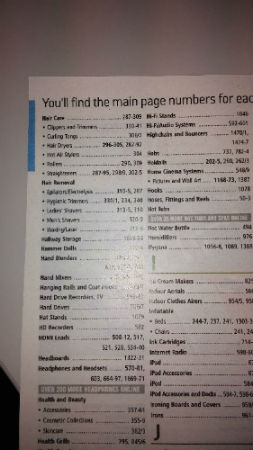Think of your website as the Argos catalogue and think of Google as you looking at the index page trying to buy hair straighteners. You are given a selection of pages to go to in order to find hair straighteners.

How do you know which one is going to have what you are looking for? How do you decide which page to go to first? You don’t really think about it, you flick through and stop when you end up on one of the pages within that range. But Google, they want to give the searcher the best page of hair straighteners that there is on the whole internet. How can Google know which one of the 14 pages in the catalogue/on your site is the best one for the searcher?
The answer is, Google doesn’t. The result is that Google will mix around which of the 14 pages it takes the searcher to first to see which one has what you’re looking for. What that means for your SEO campaign is that your rankings will fluctuate as Google varies which of the pages it wants people to go to first.
This is something that we have seen across multiple websites in the last 9 months and have been working hard to delve into the best way to resolve the situation.
What should your onsite content strategy be?
Google is, as ever, changing the way that it indexes and ranks web pages in its ongoing mission to make it really easy for searchers to find what they’re looking for. The Panda Update to their algorithm was all about stopping thin content from ranking well in the search results and the ranking page fluctuations we have seen are likely a result of Panda refreshes, such as the 4.1 in September 2014. What that means in this case is that established sites which have been following Search Engine Optimisation best practice for the past 10 years are now losing their established rankings as Google switches the pages on their websites that it is ranking in the search results. To avoid this happening to your website.

- Every page on your website should serve a purpose other than to rank in a search engine
- Every page on your website should have unique content and be optimised for the relevant target keywords that reflect the content on the page
- All content should sit within a clear site architecture
- You should have a solid internal linking strategy between pages on your site
- If you do have very similar pages then utilise rel=canonical tags to tell search engines which page to prioritise
What to do now
If you have seen your rankings going all over the place or are seeing the “wrong” page of your website coming up in Google when you search then you really need to do a thorough content audit of your site. Look at all the pages you have, what they’re about and if you have many similar pages. Also look in Google Analytics at how people are engaging with the different pages, are they valuable? Are people spending a long time on them? Are people converting from landing on those pages? Once you have identified the valuable pages that you want to keep implement a 301 re-direct strategy to effectively remove the duplicate pages and pass the authority those pages had over to pages which are still live on the site.
If your eCommerce site is on a platform that creates duplicate pages, like Magento, make sure that you have a rel=canonical strategy in place to compensate for this.
Follow my contributions to the blog to find out more about digital marketing trends and strategy, or sign up to the ThoughtShift Guest List, our monthly email, to keep up-to-date on all our blogposts, guides and events.






